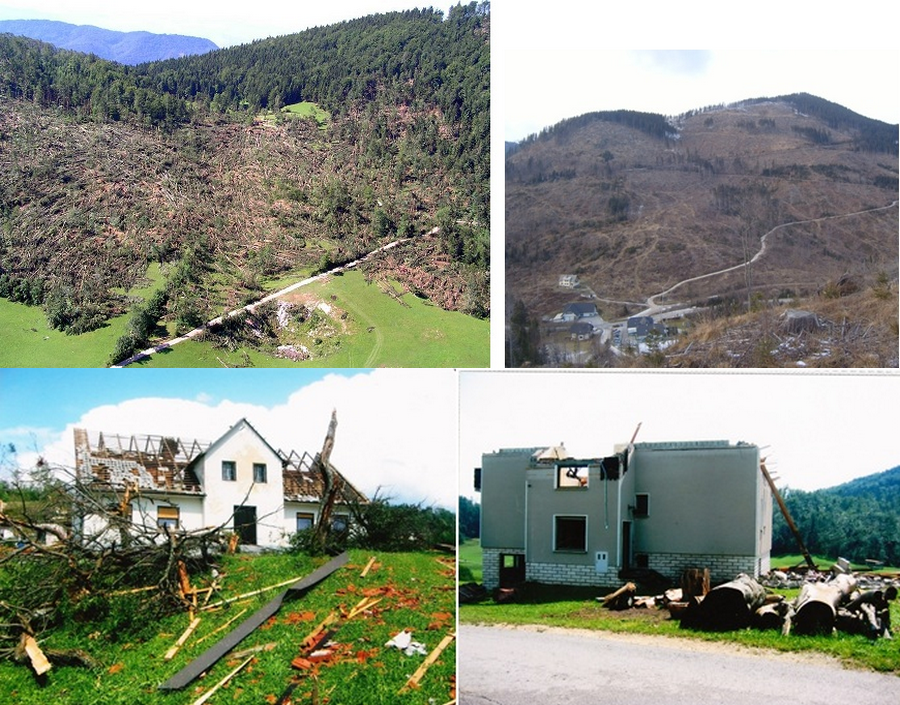With storm season in Europe in high gear and increasing talk about severe thunderstorms – just what does severe in severe thunderstorms mean? When does a thunderstorm become severe? What criteria does it have to meet to be considered severe?
Severe thunderstorms comprise a relatively small percentage of all thunderstorms. The majority of thunderstorms are not severe. For a thunderstorm to become severe, the environment factors need to be right: the presence of high to extreme instability, the presence of strong wind shear, the presence of cold and dry mid levels, etc. Major sources of damage in thunderstorms include: hail, rain, wind and lightning. The following are severe weather criteria as defined by the European Severe Storms Laboratory. They differ somewhat from the criteria in the US as defined by the National Weather Service.
HAIL: comes in different shapes and forms – single hailstones and agglomerates. Single hailstones form an onion-like internal formed during the growth of the hailstone. Agglomerate hailstones are composed of numerous smaller hailstones. Regardless of the type, a thunderstorm (hailstorm) is considered severe when maximum hailstone size exceeds 2.0 cm. Hail 2.0 cm in size is considered marginally large, 2.0 – 5.0 cm in size is considered large and at >5.0 cm it is considered very large.
Left: Very large hailstones on a severe hailstorm in Litija, Slovenia on June 29, 2006. Center: Very large hail in Saint-Valery-en-Caux, Normandy, France on July 19, 2014. Photo: InfoMeteoTuit. Right: Giant hailstone with spikes reported in Timis county, Sanandrei village, Romania, June 20, 2016. Photo:Tiberiu Saulescu
Another definition of a severe hailstorm has been introduced, considering large hail accumulations. Regardless of hailstone size, a hailstorm is considered severe if it produces on flat ground accumulations 2.0 cm or more thick. Accumulations by local water streams (storm surface runoff) do not count.
WIND: includes straight line winds and wind vortices. Straight line winds are produced in downbursts in which air at mid levels rapidly cools and plunges towards the ground, extending outwards. Straight line winds are also produced in bow echoes, a type of thunderstorm particularly characterized by a strong straight line winds at the surface. Vortex phenomena usually include mesocyclonic and non-mesocyclonic tornadoes. Regardless of the type of wind and its cause, the severe limit is at 90 km/h = 25 m/s.
Severe downburst and tornado damage around Črnivec and Gozd, central Slovenia, July 13, 2008. Image: Vesolje-SI.
RAIN: is considered such that it produces extreme impact, including: important streets have become impassable, rail, tram or subway transport is disrupted, multiple structures or their basements have been flooded, landslides have occurred, which caused significant damage to structures or vegetation and emergency services have come into action multiple times. It does not include flooding along rivers and flooding due or in part due to thawing. The limit is 25 mm of rainfall in 30 minutes and 35 mm of rainfall in 60 minutes.
LIGHTNING: no lightning rate is set as the severe limit, rather the effect of a lightning storm is considered – a lightning storm is considered severe if lightning has caused important damage to aircraft, vehicles, ships or structures, or which has injured or killed people or animals.
CG lightning by Marko Korošec.
More information on severe weather criteria in Europe is available in ESWD Severe Weather Reporting Criteria.
Noteworthy recent events:


